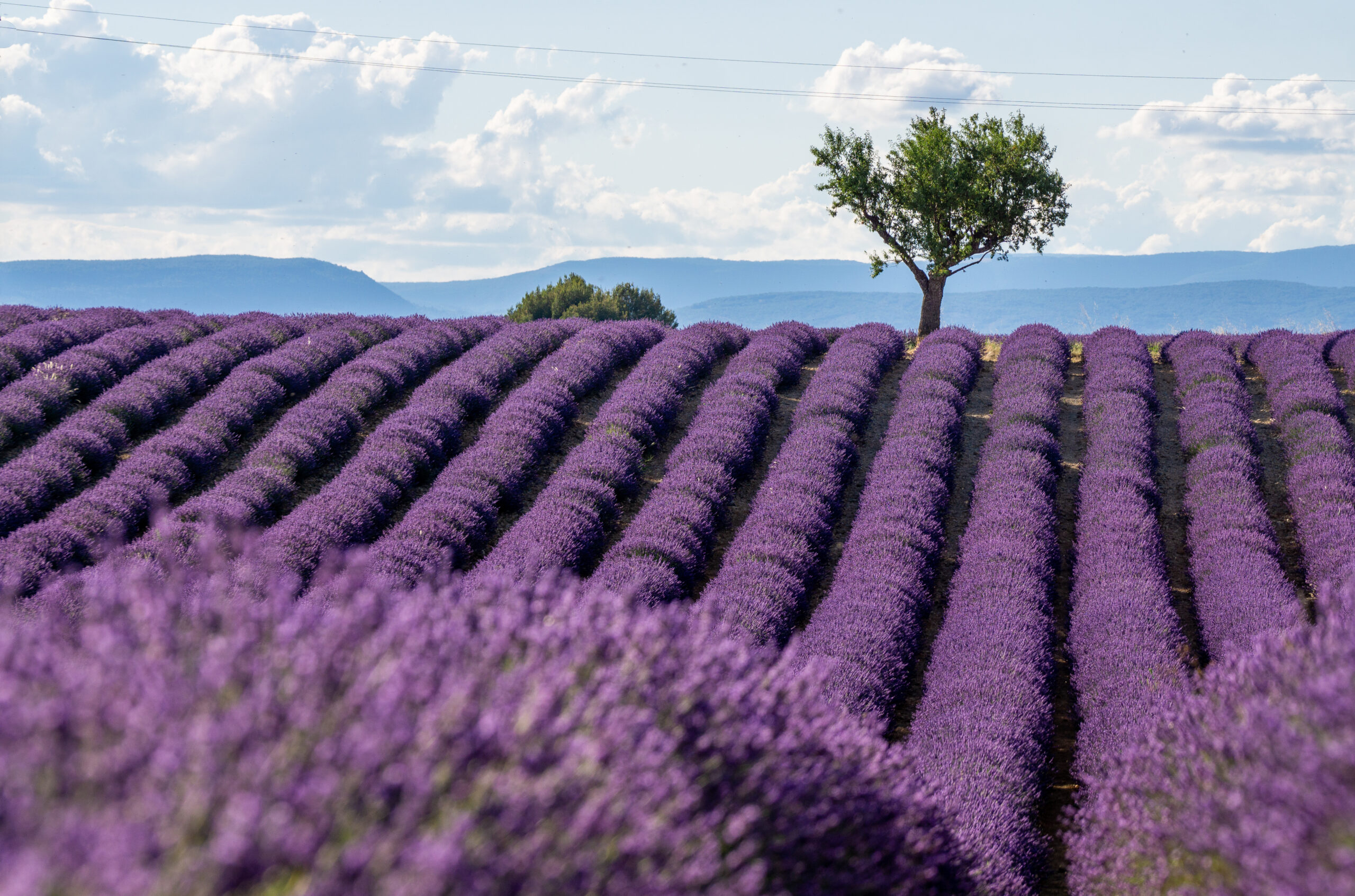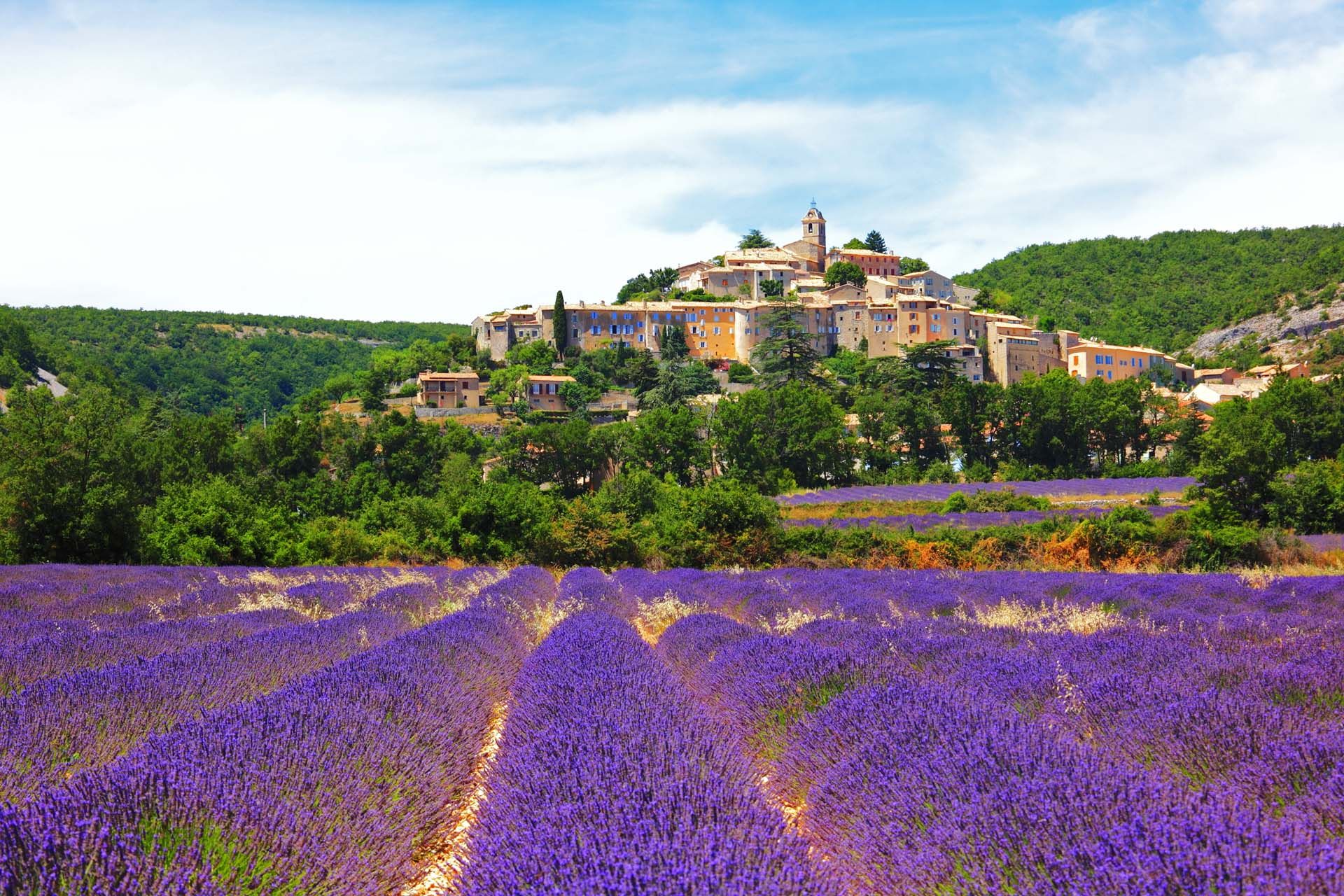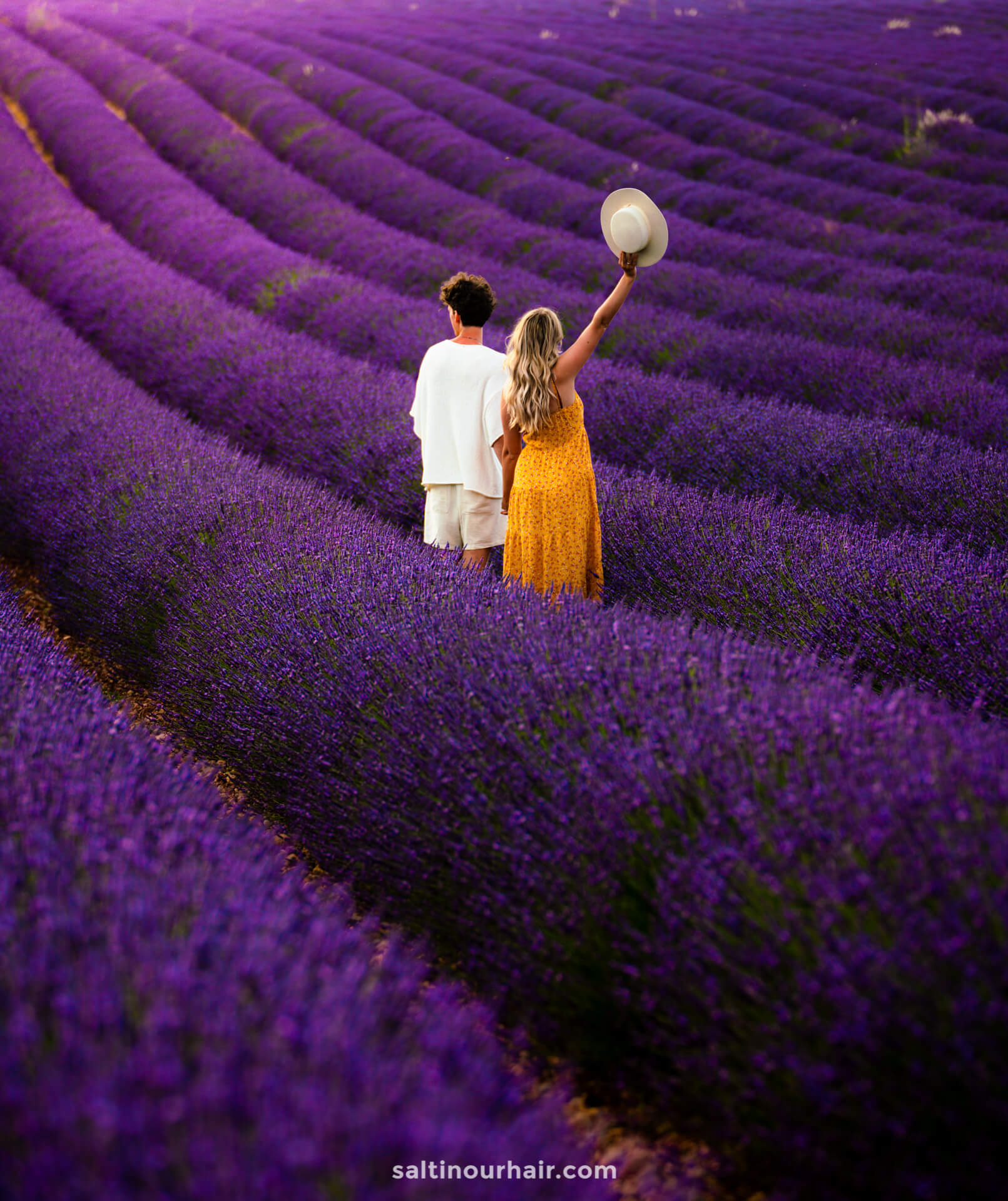The hybrid lavender variety known as “Provence” (Lavandula x intermedia) is cold hardy (tolerates frost and snow) to USDA zones 5–10. It has a rich, sweet perfume and an abundance of flowers.
It is crucial to mimic some of the soil and irrigation features of its original Mediterranean home range in order to sow and produce lavender ‘Provence’ properly.
Continue reading to find out how to plant lavender ‘Provence,’ get the right soil mix, how much water it needs, and how long it will live and bloom.
Table of Contents
Choose a Suitable Planting Area
With the right preparation, the versatile lavender species known as “Provence” may thrive in a variety of regions and can even tolerate cold and snow in the winter. When selecting a planting location, it’s crucial to replicate some of the traits of its original Mediterranean home range.
‘Provence’ lavender has a number of needs for the right planting environment, including:
- Select a location with direct sunlight (or at least 6 hours)
- dirt that drains well
- air movement or the sporadic breeze
Whether you are planting lavender in containers or along garden borders, find a lovely sunny area because lavender thrives in full light and has the nicest scent and most flowers. In gloomy parts of the garden, “Provence” won’t thrive as long or give off the same powerful scent.
Furthermore, the soil must drain quickly. Avoid parts of the garden that are marshy or have limited drainage because lavender thrives in dry environments.
All lavender plants should be planted in pots, containers, or raised beds if your garden soil is clay since they have far better drainage than some garden soils. Additionally, when planting in pots as opposed to digging in clay in garden borders, it is much simpler to amend the soil with sand and grit.
Additionally, some ventilation will aid in the prevention of fungus. Since lavender is a native of southern European coastal regions, it can withstand windy conditions quite well. In vegetable gardens or as a windbreak for more delicate plants, lavender hedges are frequently effective.
Planting Distance
The medium-sized lavender variety “Provence” can grow up to 24 inches wide in the summer. Therefore, planting must be done between other plants at a distance of between 18 inches and 2 feet in order to maintain its health. This is due to:
- The lavender’s root systems will have enough room to spread out in the soil for 18 inches, or 2 feet, without having to compete with other plants for nutrition, water, or space.
- To ensure that ‘Provence’ can thrive in full sun without other neighboring plants throwing shade, plant it far from other lavenders.
- Lavenders dislike being surrounded by other plants in small spaces with persistently motionless air since this encourages the growth of fungus. By spacing lavender plants 2 feet apart, you can ensure that each one has ample ventilation around the leaf to prevent issues.
When to to Plant ‘Provence’ Lavender
While lavender is planted in the spring or fall when the earth is still warm, the roots have time to grow without the risk of being dried out by the hot sun. (Lavenders are drought-tolerant plants once established, but after planting, they need extra care and attention.)
However, the lavender may naturally experience some transplant shock, which might affect flowers, when planting in the spring. To lessen the effects of shock and enable the plant to blossom, plant “Provence” in the appropriate soil mixture, and water it sparingly.
Nevertheless, no matter how cautious you are, lavenders of all varieties always have a tendency to bloom at their peak the year after they are planted.
You will need to water lavender more frequently during the first few weeks while the roots are establishing if you are planting in the summer and reside in a region with a hot temperature, such as California or Southern Europe.
Prepare the Soil and Dig a hole
Create a hole that is several inches wider than the plant’s root ball or a container that is around 12 to 16 inches across (Read my guide to choosing the right pot for lavenders).
Water the hole with a hose or a gallon of water from a watering can to make sure it drains properly. This is a fantastic site to plant lavender if it drains rapidly. If the soil drains slowly, you might want to think about growing things in pots.
After inserting the lavender, backfill the hole with a mixture of 2/3 potting soil or compost and 1/3 horticultural sand or grit.
Although there may seem to be a lot of sand or grit in this mixture, lavenders are specifically adapted to grow in sandy soils with quick drainage, little rainfall, and low to medium fertility.
‘Provence’ lavender will produce the largest blossoms and the greatest scent under these ostensibly difficult conditions.
(Read my post on the ideal soil mixture for lavenders for additional details.)
Soil pH
In soils that range from being somewhat acidic to being alkaline, lavender “Provence” flourishes (pH 6.5-8). It could be preferable to plant in pots or containers if your garden soil is particularly acidic.
By observing the types of plants that are flourishing in your garden and those of your neighbors, you may determine the pH of the soil there.
You might need to grow lavender in pots if there are a lot of acid-loving plants nearby, such as azaleas, rhododendrons, camellias, etc. Ask a local gardening enthusiast to find out the pH of the soil in the area by finding them.
If not, you can purchase a soil test kit (such as the one in the photo). On Amazon, soil gauges may be purchased for a great price and are simple to use without the need for specialized knowledge.
To adjust the soil’s pH to the ideal range for pots and containers, mix either a tablespoon of horticultural lime or a half-cup of wood ash (both of which are alkaline).
Read my piece on lavenders and acidic soil for more information.
Water Frequently Until Established
However, when the root system becomes established in the soil, they need careful watering after planting.
After planting, give your lavender ‘Provence’ a generous soak of water. If you are planting in the spring or summer, water once every other day for the first week after planting and then once every week for the first month. Reduce the watering to once every two weeks after the first month.
If you plant in the fall, water once every three days during the first week and once a month after that until winter. If left outside over the winter, lavender plants won’t need any more water.
Lavenders that are fully established (after a year) only need watering if the weather has been continuously hot and there hasn’t been much precipitation for two to three weeks.
Give your plants plenty of water to help them develop strong roots in the ground. Lavender thrives in severe, desert climates and can withstand both heat and drought.
(Read my article about how often to water lavenders for additional details on watering in various regions and situations.)
Key Learnings:
- Select a location with full light, soil that drains well, and some breeze.
- Plant lavender ‘Provence’ at a distance of between 18 inches and 2 feet.
- To increase drainage and mimic the ideal soil conditions in Southern Europe, create a hole that is wider than the root ball of the lavender plant. Fill the hole with a soil mixture that is made up of 2/3 compost and 1/3 sand or grit.
- pH 6.5-8 is needed in the soil for lavender “Provence.” Add some horticultural lime or wood ash, both of which are alkaline, if your soil is excessively acidic.
- After planting, irrigate the lavender and keep doing so until the roots are well-established. In hot weather, water once every two weeks, and wait until spring to water during winter dormancy.
FAQ
Is Provence lavender the same as French lavender?
The French hybrid lavenders that are frequently produced in France and farmed for lavender oil and dried buds are referred to as the Provence Lavender by the Lavandin variety. This lavender grows well in gardens and is a favorite of hummingbirds, butterflies, and bees.
What is Provence lavender?
A particularly fragrant variety of lavender is called “Provence French Lavender” (Lavandula intermedia). It has tall stems and spikes of lavender-blue flowers and is occasionally referred to as Lavendin. Perennial plant that can withstand drought (xeric).
What is the best time to see lavender in Provence?
When is Provence’s lavender growing season? In June, the fields of Provence begin to blossom; by the end of the month, the majority of the region’s lavender will be in bloom. Early to mid-July marks the pinnacle of the fields. The flowers will bloom later the higher the field’s elevation.
How long is the lavender season in Provence?
nearly two months



